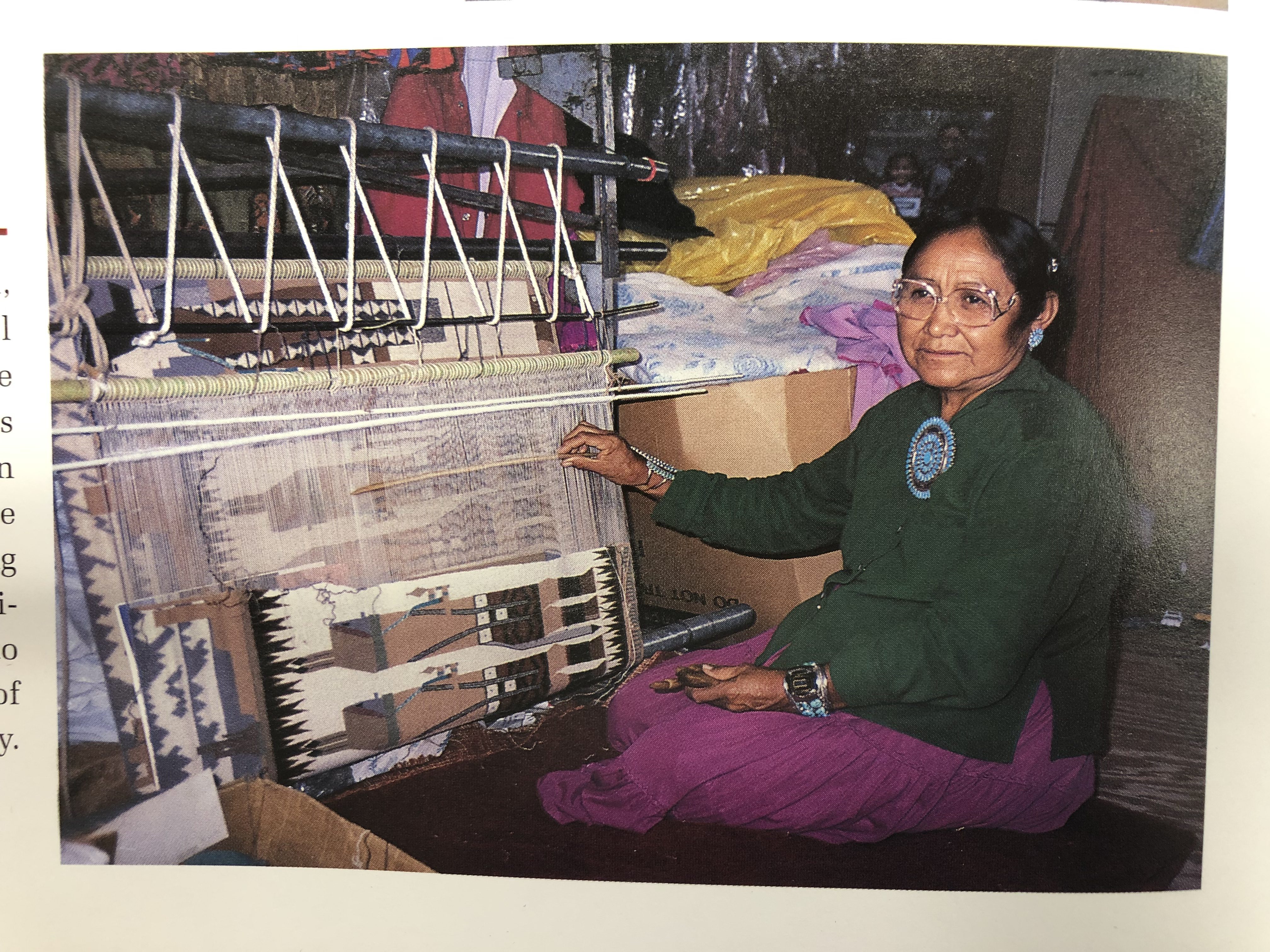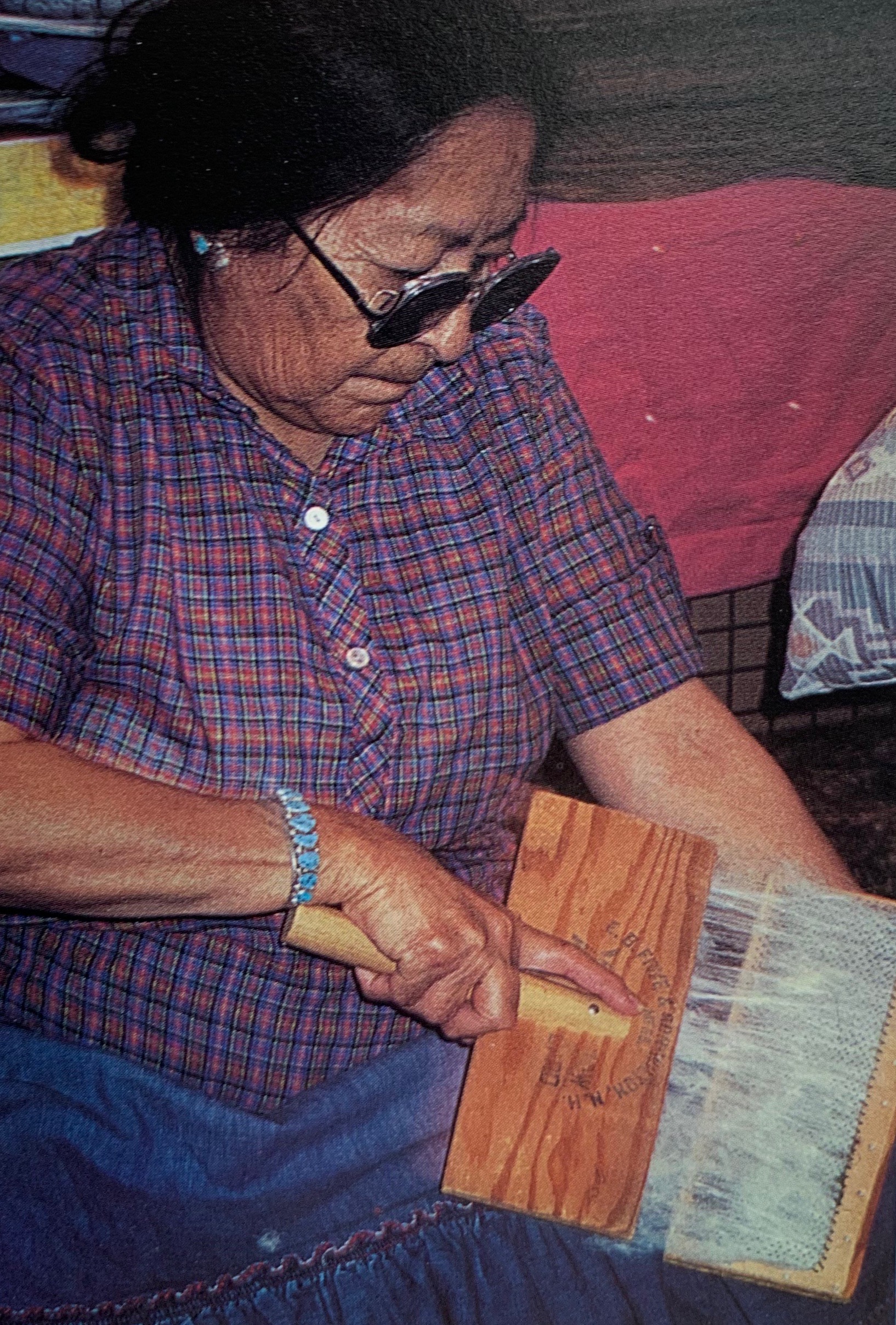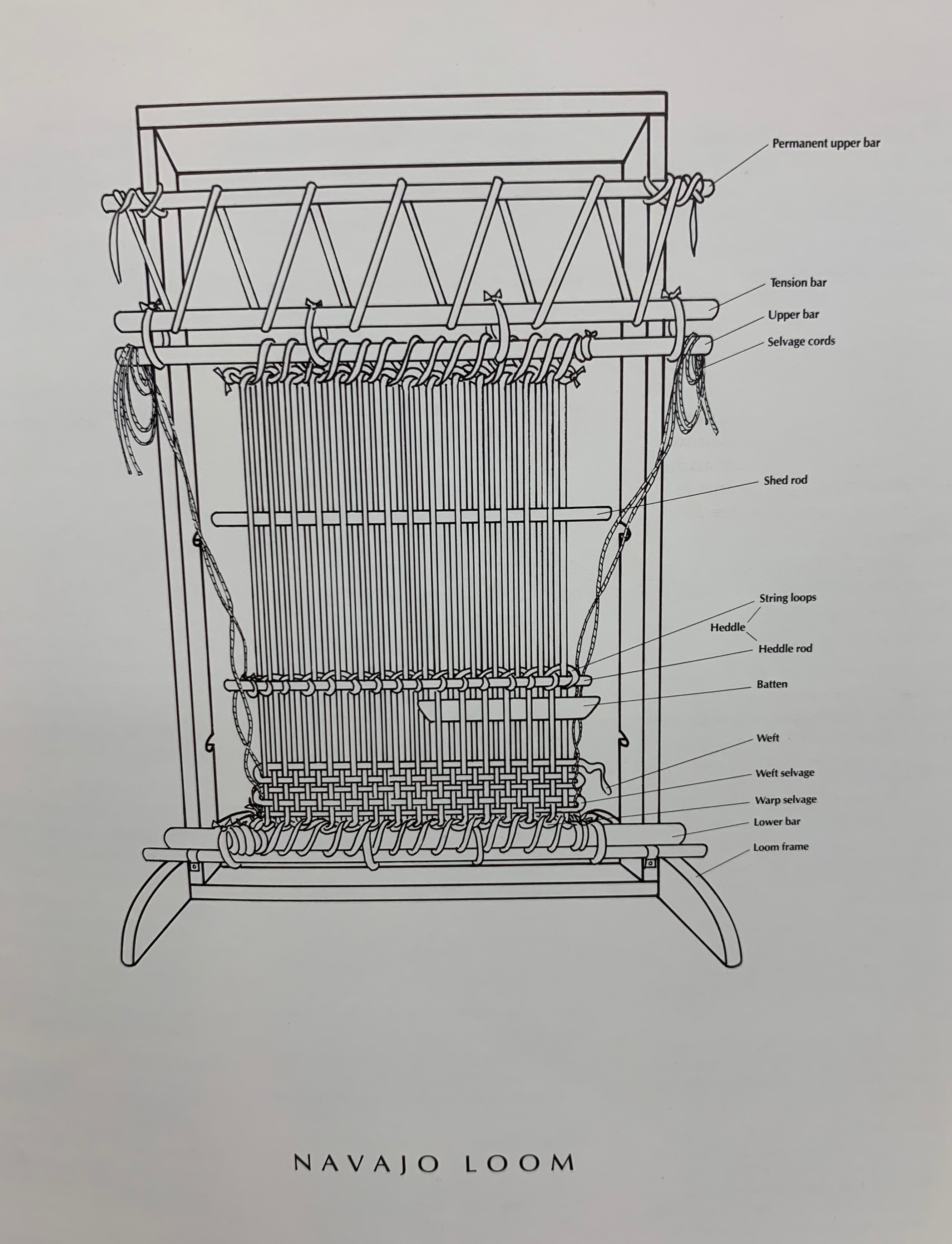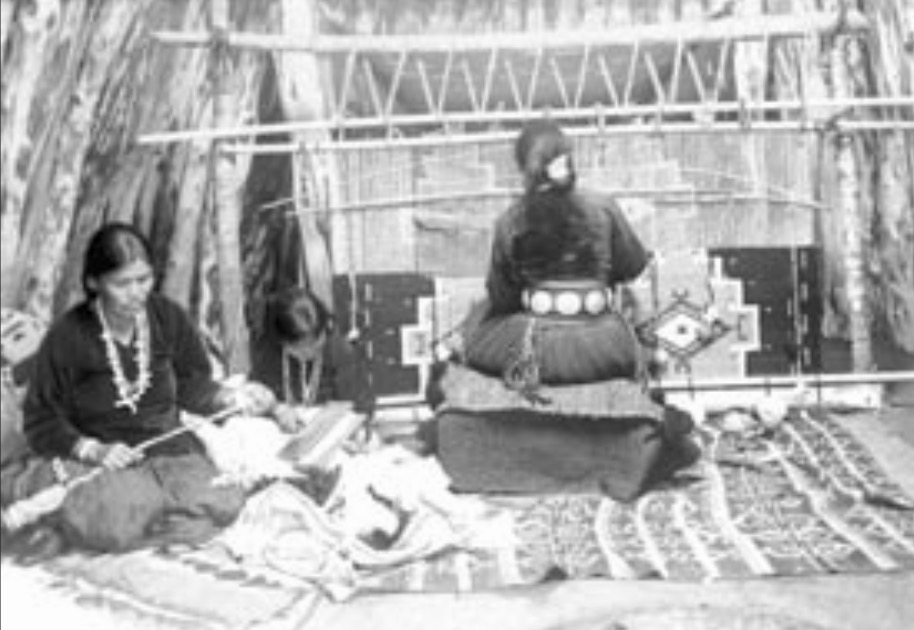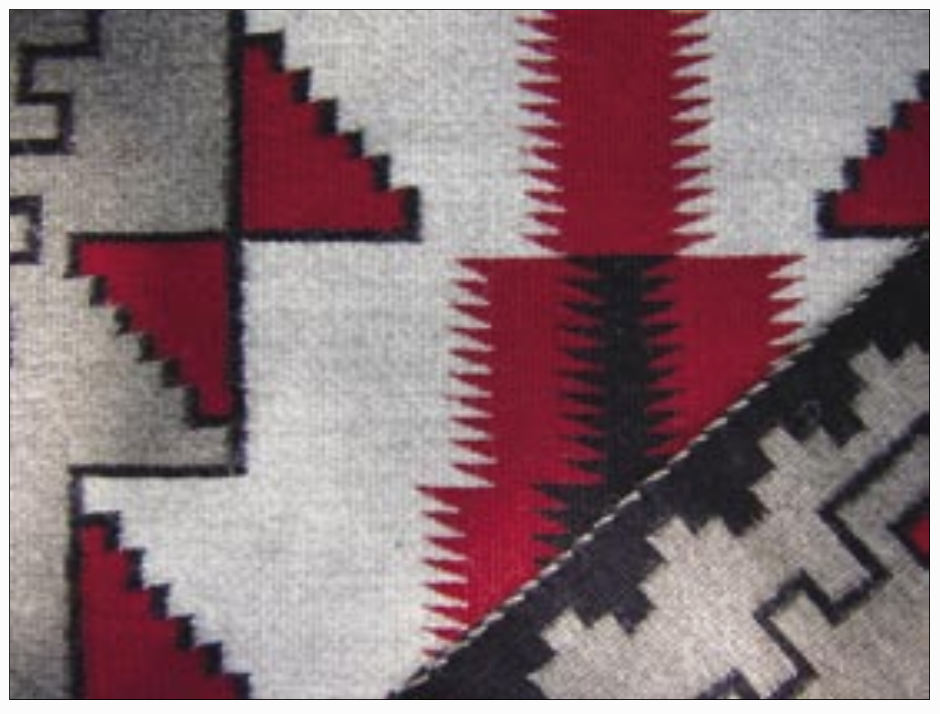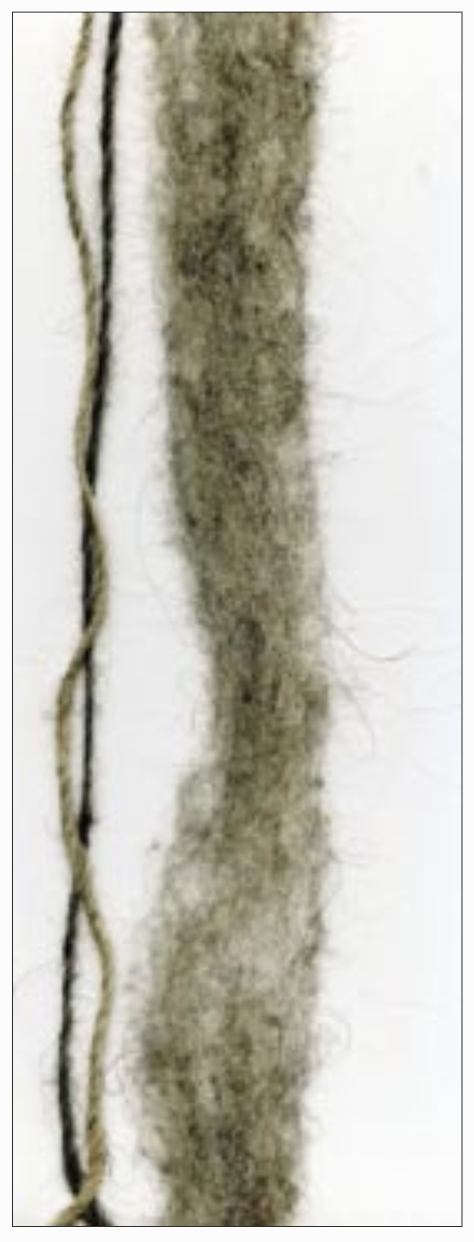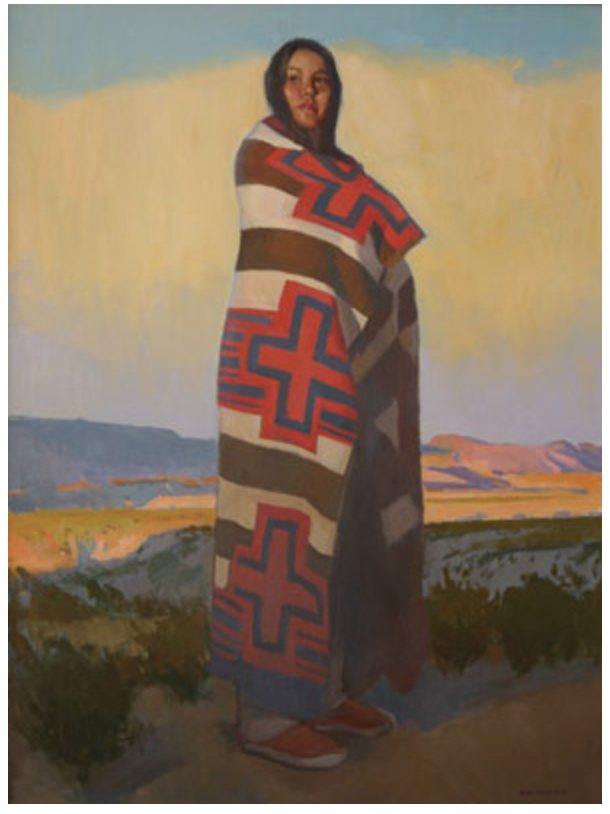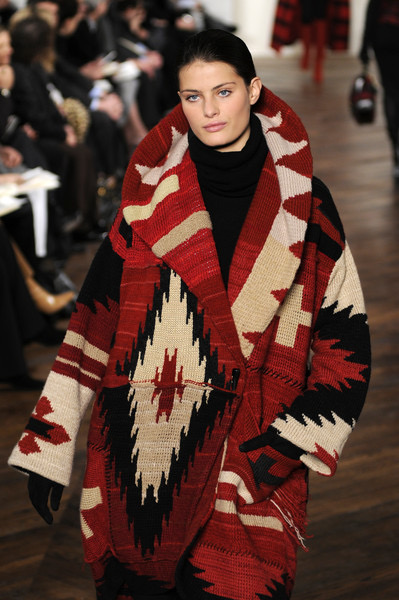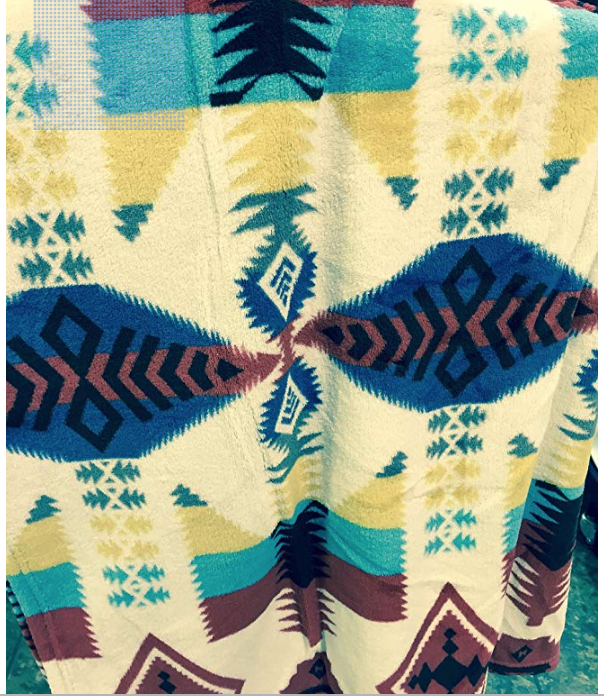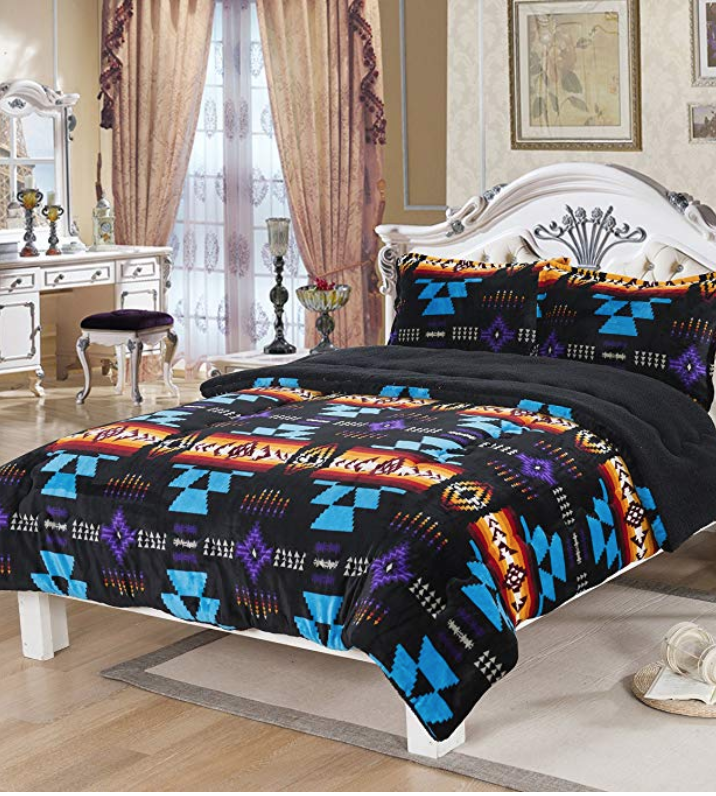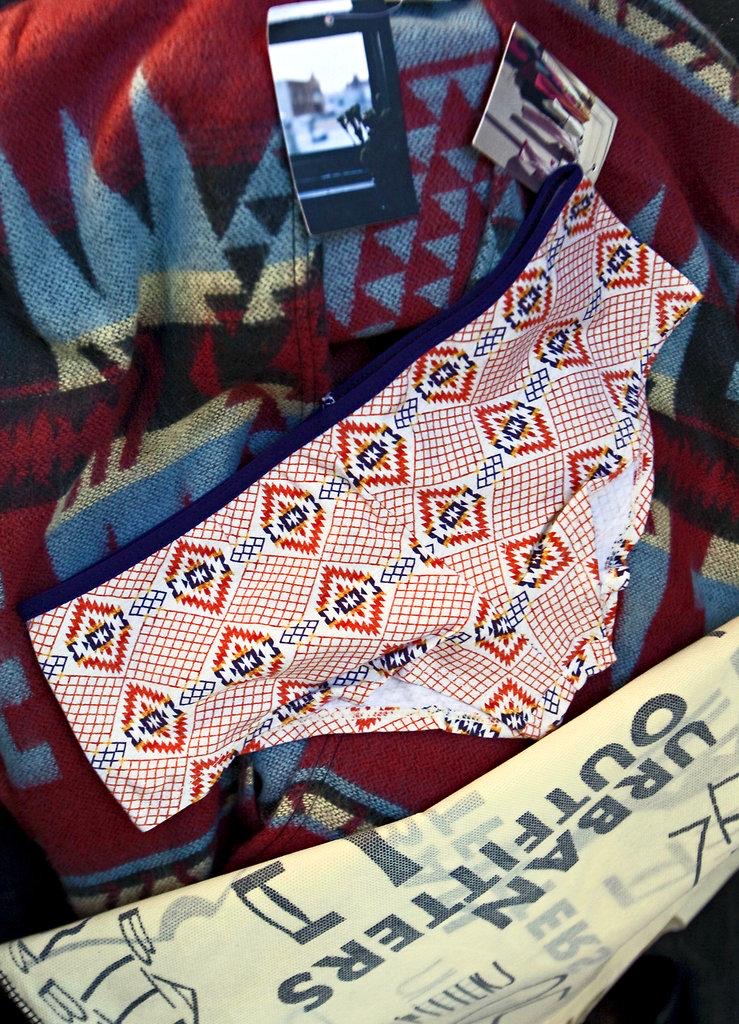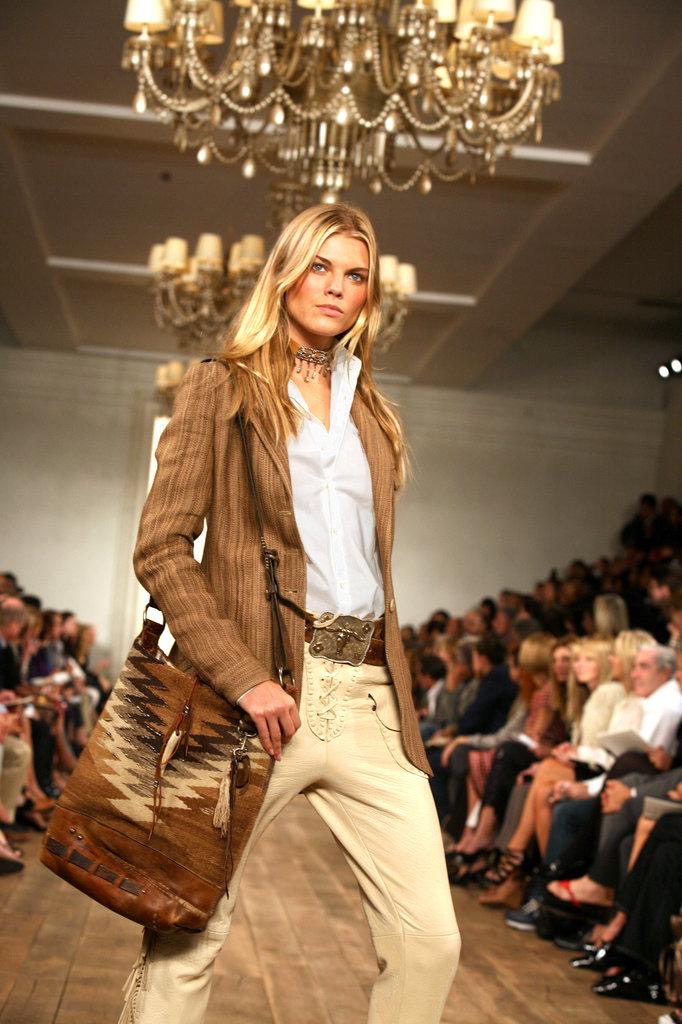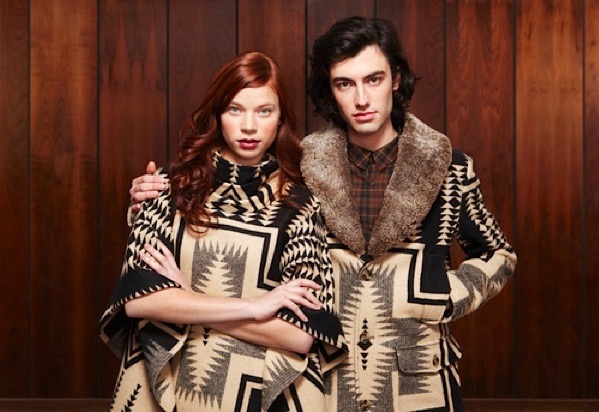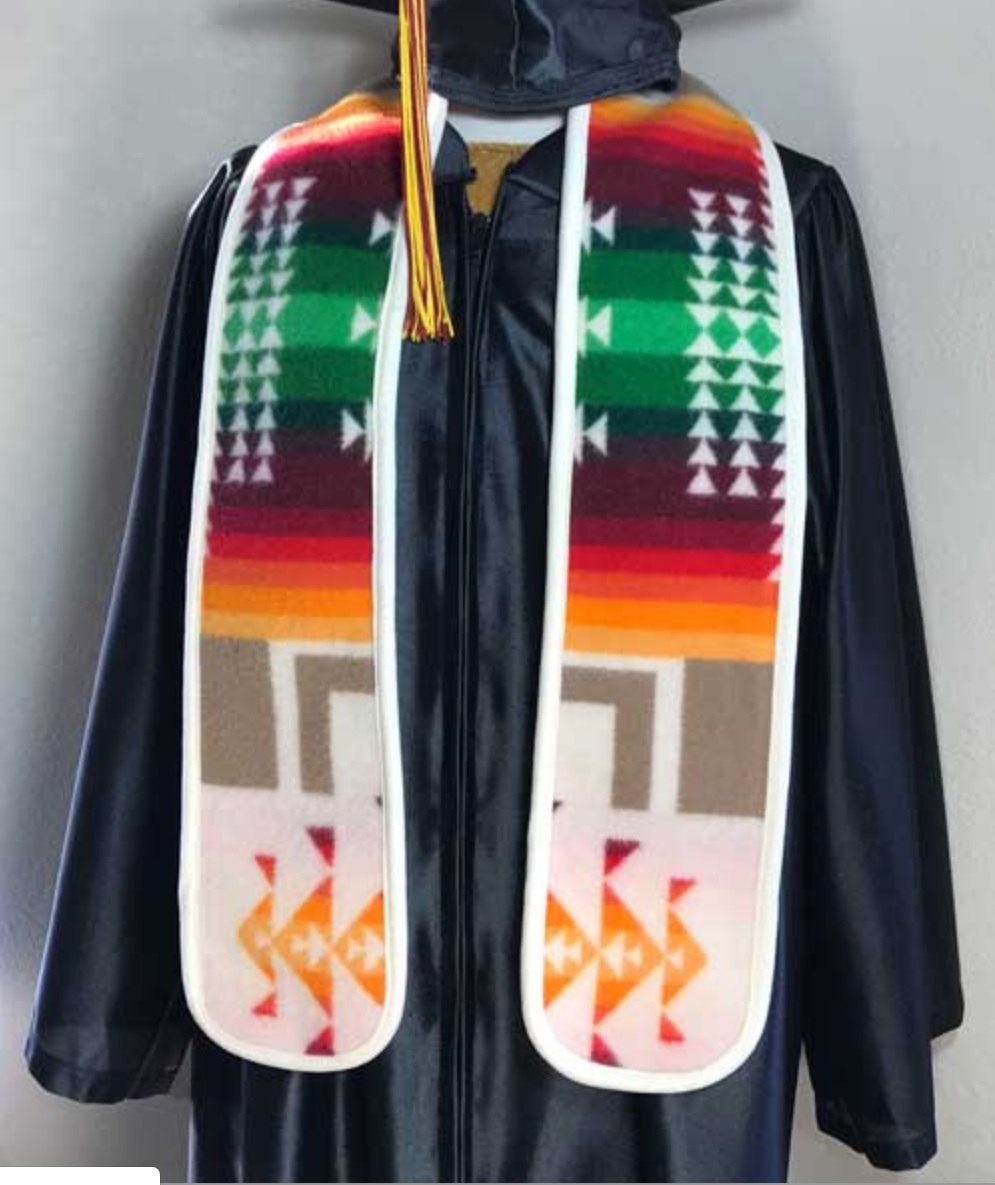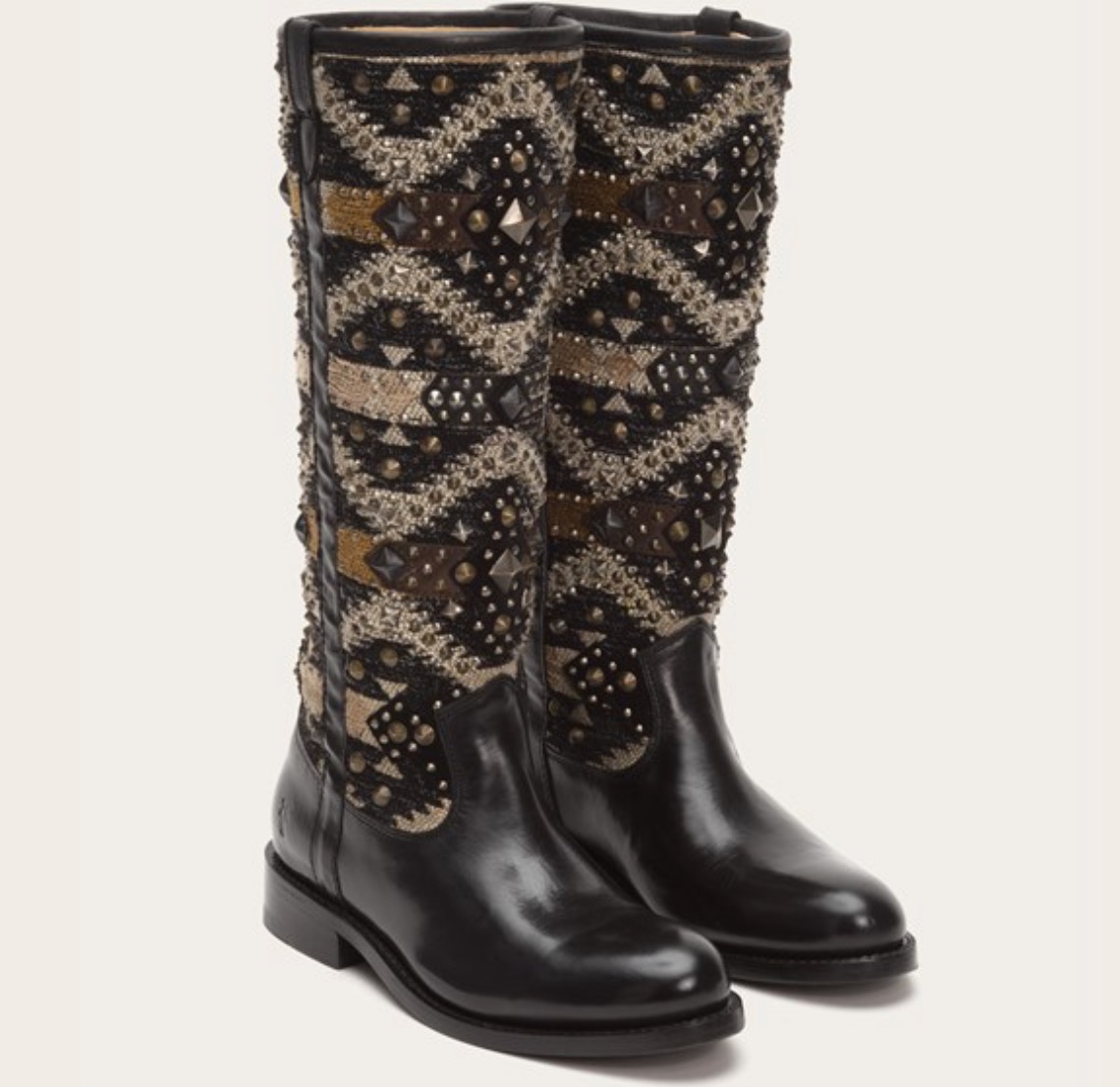The Technique
What process was/is used to make the design in general?
The Navajo people establish a sedentary life and began to practice weaving. The Navajo people learned from the Hopi how to build looms and construct fabrics on a large scale. They introduced geometric shapes, diamonds, and zig-zags. In the 1800s, Navajo blankets were made of natural coloured wool. In the 19th century, red bayeta was introduced and led to a period characterized by bright and unique there designs. Today they are normally accomplished with a hand or power operated loom.
https://www.britannica.com/art/Navajo-weaving
Is it surface, structural, or a combination?
Weaving is considered a combination of both surface and structural designs. The structural performance of interlacing of two sets of yarns is just as important as the surface design of image of Navajo weaving.
https://books.google.com/books?id=rcqcAAAAQBAJ&printsec=frontcover&dq=Native+American+Culture+By+Britannica+Educational+Publishing&hl=en&sa=X&ved=0ahUKEwjc8e2SieThAhWTqp4KHbFjD0wQ6AEIKjAA#v=onepage&q=Native%20American%20Culture%20By%20Britannica%20Educational%20Publishing&f=false
What materials were/are used for the design?
Plain weaving is each filling yarn passes over and under the warp yarns, with the order reversed in alternating rows. In plain weave, fabrics like percale, muslin, and taffeta are used. Twill weaves are made by interlacing the yarns in a manner producing diagonal ribs, ridges, or wales across. Twill fabrics include denim, gabardine, and flannel. Then you have satin weaves which have a sheen produced by exposing more warps than fillings on the right side of the fabric. Fabric made in satin weaves include slipper satin, satin crepe, and various sateen types.
Who did the work?
Government reports confirmed that that textiles by the Navajos were the most profitable of the native industries is done by women in their spare time. Men were typically off being medicine men perpetuate religion and culture in the spiritual realm while women provide the material sustenance by weaving commodities.
https://digitalcommons.unl.edu/cgi/viewcontent.cgi?referer=https://www.google.com/&httpsredir=1&article=1913&context=tsaconf
What was/is the purpose of the textile with this surface design?
The original function of the Navajo weaving was to produce clothing such as; shoulder robes, wrap around dresses, shorts, and belts etc. After the mid-1800s the weaving market flourished for trade with the white settlers.
https://www.californiaheritagemuseum.org/navajo-textiles.html
Is the technique still being carried out today by the culture? Do they still practice the technique, teach it, and produce objects with the technique?
Women emphasize how important it is to keep and animals and weaving a priority. The future for them is unknown ad they must continue to producing weavings to carry the Navajo lifestyle and livelihood. Navajo textiles are highly sought after item. The cost of one rug could cost anywhere from $1,000 to $20,000. Due to the labour-intensive and traditional process of shearing, washing, and weaving the demand has continued.
http://citeseerx.ist.psu.edu/viewdoc/download?doi=10.1.1.830.4457&rep=rep1&type=pdf
Popular Culture Today
How is this surface design or structural design or combination produced today?
These images above are majority surface designs that are similar to that of the Navajo people. They share a common print or image but how they are made is not the same as the traditional weaving final product. Most designers have taken the pattern and coloring or both and made these new design that wouldn’t normally be found of these fabrics or products.
Has the visual of the surface or structural design been used in material culture production today in popular culture or the fashion world?
Urban Outfitters release of the Navajo Underwear was not legal or appropriate for the Navajo people. Not only was the design used without permission but it was printed on to underwear which could be seen as scandalous for the culture of the Navajo people.
Urban Outfitters release in the same line a Navajo flask. This flask just like the underwear had a Navajo pattern on the outside. There was not legal permission to use this pattern. The flask is not seen as appropriate due to the fact that Navajo people suffered from drinking issues.
Ralph Lauren has release design that mimics the Navajo people design and made it very unsettling for the Navajo people since permission was not granted and it is not being used for it’s the original purpose.
https://www.urbanoutfitters.com/shop/printed-fabric-wrapped-flask-0028576884-018?color=&isProduct=true&itemdescription=true&navAction=jump&parentid=SEARCH%20RESULTS&quantity=1&search=true&type=REGULAR
Is it copied or used as inspiration?
Some are copies or knock-off of traditional Navajo designs. In most cases, they were used without permission as a designer were unaware that the Navajo design have been trademarked and legal pursuit would be taken upon its release. For example, Urban Outfitters faces a lawsuit in which they used Navajo Pattern on underwear and flask and had not asked for permission for use of the design. In some fewer cases, just inspiration has been taken from the Navajo designs and has been incorporated into the garment.
What materials are used in the production?
Depending on the product it could be a handful of these from wool all the way to leather. It is really dependent on the product they are trying to produce. In the traditional production of Navajo weaving most “fabrics” used are natural fabrics that have been used for a long time.
Where can it be purchased?
Some can be still be purchased today like the YSL backpack and the Frye boots other have been taken off the market due to their illegal replication of the Navajo Weaving patterns. For example, the entire Navajo inspired line consisting of the Underwear and flask cannot be found anywhere for purchasing but the Navajo Frye boots are still available for purchase.
https://www.thefryecompany.com/jayden-navajo-tall-d-75410
Who is producing it?
These products are being produced by numerous designer and company ranging from YSL to Urban Outfitters to Ralph Lauren. They are not being produced using the traditional loom or by people of the Navajo Tribe. Since they are not being produced by the Navajo people these design and patterns lack the symbolic and traditional significance.
How much does it cost?
Some of this product can range upward to thousands of dollars it is just dependent on the product and the company or designer that is producing it. The Navajo Frye boots are roughly $600 but the YSL Backpack is estimated at ~$1,000.
Legal/Moral Issues
END
Has the culture group who produced the technique you researched given permission for the use of their work with the examples discussed in Part II?
Overall most of our photos have come from designers who have used the Navajo techniques and practice without asking for permission or without giving legal credit to the Navajo people in which has resulted in lawsuits and infringement.
https://www.theguardian.com/us-news/2016/nov/18/urban-outfitters-navajo-nation-settlement
Discuss the laws that govern cultural intellectual property in the country where the culture resides.
Intellectual property law deals with the rules for securing and enforcing legal rights to inventions, designs, and artistic works. The U.S Constitution Article I Section 8 and Clause 8 states that “Patent and Copyright Clause of the Constitution. [The Congress shall have power] “To promote the progress of science and useful arts, by securing for limited times to authors and inventors the exclusive right to their respective writings and discoveries.” Our particular culture of interest is centred in the United States. The Navajo Nation has trademarked traditional patterns and designs. The tribe registered the name Navajo as a trademark in 1943, according to court documents. In addition, The Federal Indian Arts and Crafts act of 1990 that makes it illegal to claim a product that is made by a Native American when it is not.
What laws in the US govern cultural intellectual property?
*******
Is the design considered sacred and should not be reproduced because of its sacred nature?
Many Navajo designs are elaborations on patterns found in Navajo baskets and petroglyphs scattered across the reservation. Navajo weavers say that any design woven by a Navajo weaver within the four sacred mountains of the Navajo Nation is sacred. The symbols, pattern, and color all having meaning to the culture of the Navajo people but to people of the outside culture, it’s seen as just another piece of artwork.
Is the technique/visual representation of the culture’s work considered public domain?
Navajo weaving and especially pattern that are from the Navajo culture are not open to the public domain. Designers have taken “inspiration” or made imitation from the Navajo culture and repercussion have been made; lawsuit and infringement have been involved.

